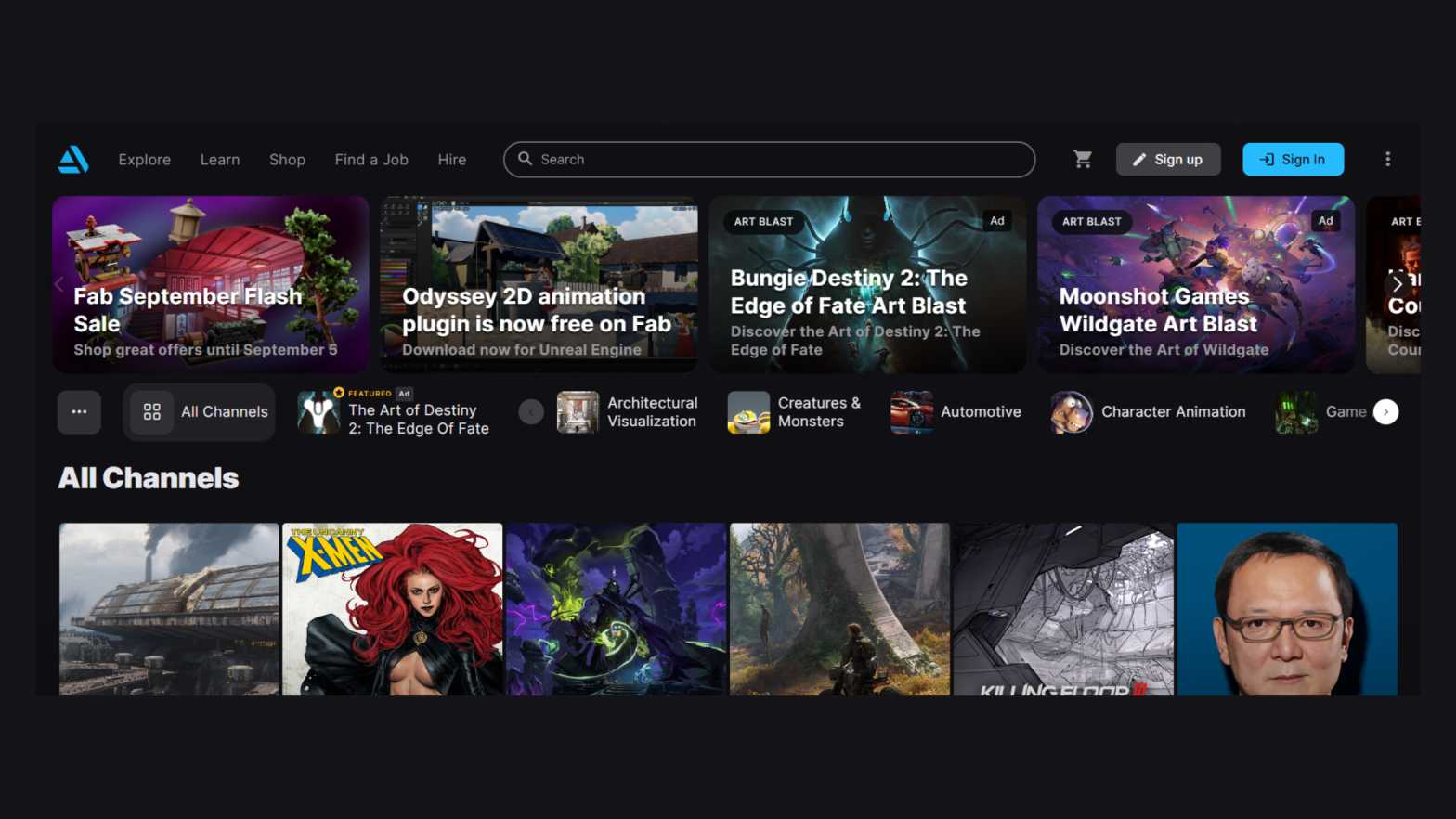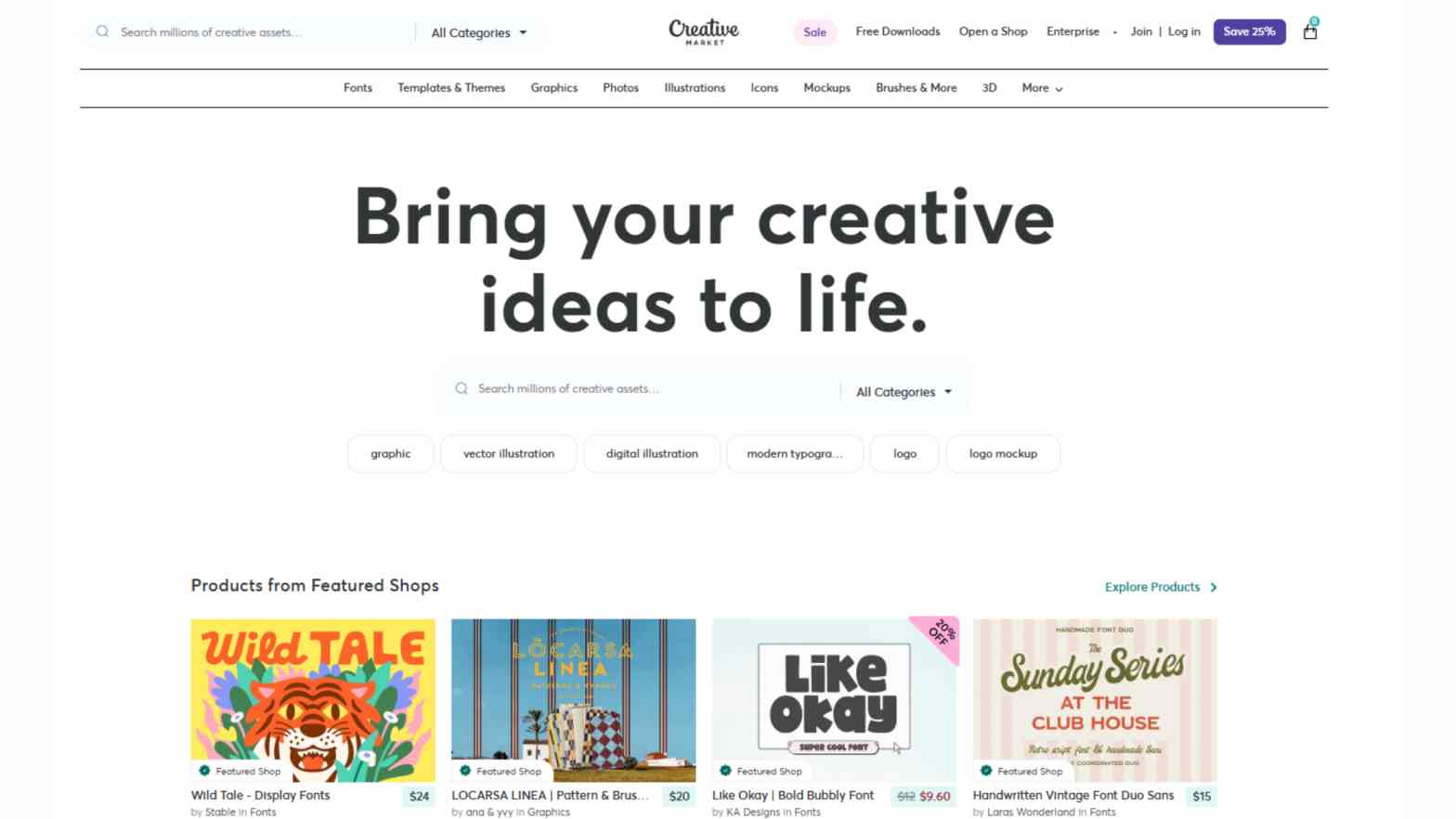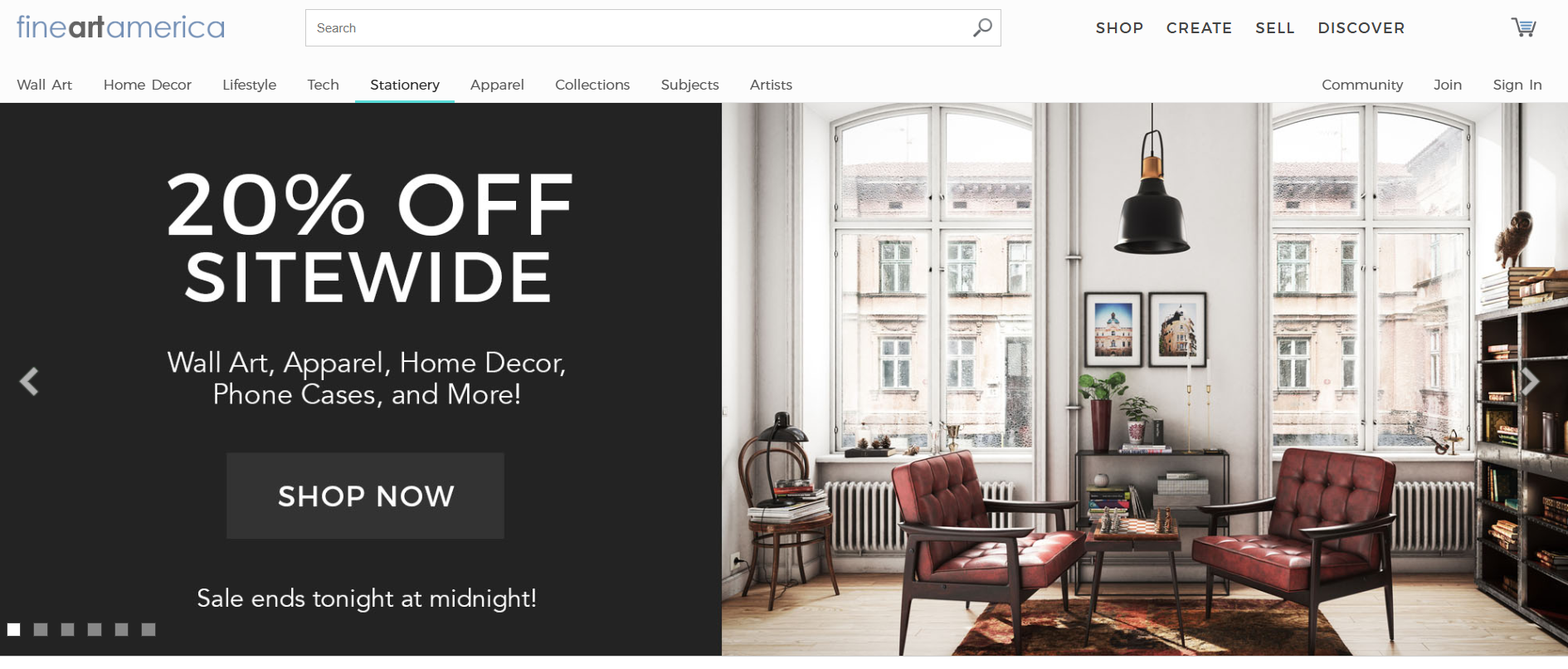In the ever-evolving world of digital creativity, artists have more opportunities than ever to monetize their work. With the rise of AI-generated art, NFTs, and print-on-demand services, selling digital art online has become a lucrative avenue for passive income and global reach. Whether you’re a hobbyist looking for passive income or a professional artist building a brand, choosing the right platform is key. In this guide, we’ll cover the 21 best websites to sell your digital art online, along with their pros, cons, and tips for success.
Is It Worth Selling Art Online?
Yes, selling art online is absolutely worth it. With the rise of digital platforms, print-on-demand services, and global marketplaces, artists now have access to audiences that were once impossible to reach. Unlike traditional galleries that take high commissions and have limited reach, online platforms allow you to showcase your work to millions of potential buyers worldwide.
Beyond selling physical prints, artists can also monetize digital downloads, merchandise, and even NFTs. While competition exists, the key is finding the right platform that fits your art style and business goals. With persistence and smart marketing, selling art online can become a reliable source of income and long-term career growth.
21 Best Websites to Sell Digital Art Online
1. Etsy

Etsy is one of the most popular marketplaces for selling digital and handmade art online. With millions of active buyers, it provides independent artists with a massive audience. You can sell digital downloads, such as printable wall art, or even physical prints through integrations with print-on-demand services. While Etsy charges small listing fees and transaction costs, its built-in search engine makes it easier for new artists to be discovered compared to building a website from scratch. If you want flexibility and a wide reach, Etsy is one of the best starting points for selling digital art online.
- Pros: Massive audience, strong search visibility, integrates with print-on-demand services.
- Cons: Listing fees ($0.20 per item), high competition.
- Best for: Artists who want to sell both digital downloads and physical prints.
2. Redbubble
Redbubble is a global print-on-demand marketplace where artists upload designs that customers can purchase on products like t-shirts, phone cases, mugs, and stickers. The platform takes care of printing, shipping, and customer service, allowing you to focus solely on your artwork. While profit margins can be lower due to Redbubble’s base pricing, it offers a hassle-free way to earn passive income. For digital artists who want their work on everyday products, Redbubble is an excellent choice.
- Pros: Massive audience, strong search visibility, integrates with print-on-demand services.
- Cons: Listing fees ($0.20 per item), high competition.
- Best for: Artists who want to sell both digital downloads and physical prints.
3. Society6

Society6 is a marketplace dedicated to home décor and lifestyle products, making it ideal for artists who want their work to be featured on items like wall art, rugs, tapestries, and bedding. It’s an artist-first platform, meaning it handles printing, shipping, and logistics while providing exposure to a design-focused audience. However, artists have limited control over pricing since Society6 sets product costs. Still, if you’re looking to tap into the lifestyle and interior design niche, Society6 is one of the best websites to sell your digital art online.
- Pros: High-quality products, artist-friendly marketplace.
- Cons: Limited control over pricing.
- Best for: Digital artists targeting interior design and lifestyle audiences.
4. ArtStation

ArtStation is widely recognized as the professional hub for digital artists, particularly in gaming, concept art, animation, and 3D modeling. Artists can showcase their portfolios, sell digital downloads like brushes and tutorials, or offer high-quality prints. ArtStation also attracts industry professionals, making it an excellent place to build credibility and network with potential employers. While it caters more to professionals than casual buyers, it’s the go-to platform for serious digital artists looking to expand their careers.
- Pros: Great portfolio tool, industry recognition, sells prints and digital downloads.
- Cons: More professional than casual buyer-friendly.
- Best for: Artists aiming for careers in gaming, animation, or film.
5. DeviantArt

DeviantArt is one of the largest and oldest online art communities, known for connecting millions of creators and art enthusiasts worldwide. Artists can sell prints and digital downloads directly through its DeviantArt Prints program. The platform also provides a strong community atmosphere with feedback, groups, and contests. Although the competition is high and the marketplace features are less developed than newer platforms, DeviantArt remains an excellent choice for building exposure and engaging with a passionate creative community.
- Pros: Massive community, built-in store feature.
- Cons: High competition, less e-commerce focus than other sites.
- Best for: Artists seeking exposure and community-driven engagement.
6. Gumroad
Gumroad is a simple yet powerful platform that allows creators to sell digital art directly to their audience. You can sell downloads such as high-resolution prints, art packs, tutorials, or brushes without relying on a third-party marketplace. Gumroad gives artists full control over pricing and customer relationships, but it requires you to generate your own traffic through social media or email marketing. If you already have an established fan base, Gumroad is one of the most flexible tools to monetize your art.
- Pros: No marketplace competition, direct customer relationship.
- Cons: You’re responsible for driving your own traffic.
- Best for: Artists with existing audiences (on social media, YouTube, or newsletters).
7. Creative Market

Creative Market is a highly curated digital assets marketplace where artists sell illustrations, textures, fonts, templates, and other design resources. With a strong community of designers and entrepreneurs, Creative Market provides excellent visibility for creators producing assets for commercial use. The platform has a selective application process, but once approved, your work can reach a large professional design audience. It’s especially valuable for digital artists who create assets for branding, web design, and creative projects.
- Pros: Large design-focused customer base.
- Cons: Selective approval process.
- Best for: Artists who create resources for other designers.
Also Read: 33 Real Ways to Make Money From Your Hobbies
8. Design Cuts
Design Cuts is another curated design marketplace, known for offering high-quality design bundles and resources. Unlike open marketplaces, Design Cuts works directly with selected artists to promote their work through collaborations and bundle deals. This means entry is competitive, but it comes with access to a loyal creative community and strong marketing support. For digital artists producing premium, professional-quality assets, Design Cuts is a fantastic platform for selling digital art resources.
- Pros: Loyal creative community, curated bundles.
- Cons: Competitive entry, not open to everyone.
- Best for: Professional digital artists selling premium assets.
9. INPRNT
INPRNT specializes in gallery-quality prints and is beloved by many professional illustrators and digital painters. The platform focuses on high-end art printing, ensuring that your digital art is presented at the highest standard. INPRNT is artist-first, offering fair revenue splits and excellent print quality. However, it requires an application or invitation to join, making it more exclusive than open marketplaces. If accepted, it’s one of the best platforms for serious digital artists selling fine art prints.
- Pros: Excellent print quality, artist-first policies.
- Cons: Application or invitation required.
- Best for: Serious artists looking for gallery-quality prints.
10. Zazzle
Zazzle is a massive online marketplace that allows you to place your art on customizable products ranging from clothing to office supplies and gifts. With its wide range of product options, Zazzle is ideal for artists who want to create designs for commercial merchandise. While it’s not strictly art-focused and profit margins can vary, the platform provides global reach and easy product customization, making it a great option for digital artists looking to expand their revenue streams.
- Pros: Huge range of items, global reach.
- Cons: Not strictly art-focused.
- Best for: Artists creating designs for commercial merchandise.
11. Fine Art America

Fine Art America is one of the largest print-on-demand marketplaces for wall art and home décor. Artists can sell their digital art as prints, canvases, or merchandise while the platform handles production and shipping. The site also offers licensing opportunities, giving artists another way to earn. However, the competition is significant, and standing out requires effective marketing. Still, with its global audience, Fine Art America is a strong choice for digital artists aiming to reach a wide market.
- Pros: Global distribution, print-on-demand handled for you.
- Cons: High competition, commission-based.
- Best for: Photographers and fine artists.
12. Saatchi Art
Saatchi Art is an online gallery that connects artists with serious art collectors. The platform allows you to sell original works, limited editions, and prints. With curatorial support and access to high-value buyers, Saatchi Art positions itself as a premium marketplace. The downside is a 35% commission fee, but the potential for higher sales makes it worthwhile for established artists. If you’re looking to reach collectors rather than casual buyers, Saatchi Art is a top choice.
- Pros: High-value buyers, curatorial support.
- Cons: 35% commission fee.
- Best for: Professional artists selling originals and limited edition prints.
13. Displate
Displate is a unique platform that sells metal posters, giving digital artists a fresh and modern medium for their work. It caters strongly to fans of pop culture, gaming, and fantasy, making it a niche yet growing marketplace. The platform also handles production and logistics, letting artists focus on creativity. While product variety is limited, Displate’s distinctive format makes it stand out from other print-on-demand services.
- Pros: Unique medium, growing community.
- Cons: Only one product format.
- Best for: Pop culture and fan art creators.
14. Threadless
Threadless started as a t-shirt company but has grown into a community-driven print-on-demand platform. Artists can open their own shops or participate in design challenges to gain exposure. With Threadless handling production and shipping, artists can focus on creating. However, as with other POD platforms, marketing is essential for higher sales. Threadless is best suited for artists who want to see their digital designs on wearable and lifestyle products.
- Pros: Built-in audience, wide product variety.
- Cons: Marketing needed to stand out.
- Best for: Artists with a fan base who want to sell wearable art.
15. Teepublic
Teepublic is another print-on-demand marketplace focused on apparel, accessories, and merchandise. It’s similar to Redbubble and Threadless but with its own growing audience. Artists simply upload designs, and Teepublic handles the rest. While profit margins are lower due to set pricing, it’s an easy, low-risk entry point for digital artists looking to test their designs on merchandise.
- Pros: Good exposure, low barrier to entry.
- Cons: Lower profit margins.
- Best for: Artists who want to test designs on casual merchandise.
16. Ko-fi

Ko-fi is a unique platform that combines donations, memberships, and digital product sales. Artists can set up a shop to sell prints, downloads, or commissions, while fans can also support them with one-time tips. Ko-fi does not take fees on shop sales, making it an attractive option for independent creators. The platform works best for artists who already have an audience and want a direct and personal way to monetize their work.
- Pros: No platform fees for shop sales, flexible.
- Cons: Relies on your own audience.
- Best for: Independent artists with loyal supporters.
17. Patreon
Patreon allows artists to build subscription-based memberships, offering exclusive digital art, tutorials, or behind-the-scenes content to paying supporters. It’s a great way to build a recurring income stream while deepening relationships with your fans. However, it requires consistent content creation to retain subscribers. For digital artists producing regular work like comics, wallpapers, or art packs, Patreon is one of the most powerful long-term platforms.
- Pros: Recurring income, strong community building.
- Cons: Requires consistent updates to keep patrons happy.
- Best for: Artists producing regular digital content like tutorials, wallpapers, or comics.
18. Dribbble
Dribbble is primarily a portfolio platform for designers, but it also opens doors for freelance work and commissions. While it doesn’t offer a direct marketplace for digital art, it’s widely used by companies scouting creative talent. For digital illustrators and designers, Dribbble is an excellent tool for networking, showcasing work, and landing paid projects. It’s less about selling products and more about building your career through professional exposure.
- Pros: Great for networking and exposure to potential clients.
- Cons: Not a direct art-selling marketplace.
- Best for: Graphic designers and digital illustrators seeking commissions.
19. Behance

Behance, owned by Adobe, is one of the most well-known portfolio platforms for creatives. Artists can showcase projects, join curated galleries, and connect with potential clients. While it doesn’t directly support selling digital art, it’s an excellent place to attract freelance opportunities and collaborations. Behance integrates seamlessly with Adobe Creative Cloud, making it a natural choice for digital artists already using Adobe tools.
- Pros: High visibility, integration with Adobe tools.
- Cons: Not built for direct sales.
- Best for: Artists seeking freelance opportunities and collaborations.
20. NFT Marketplaces (OpenSea, Rarible, Foundation)
NFTs have changed the digital art landscape by allowing artists to sell unique, blockchain-verified artworks. Platforms like OpenSea, Rarible, and Foundation give artists the chance to tokenize their art and sell it as NFTs. The benefits include proof of ownership and the possibility of royalties on future sales. However, the NFT market can be volatile, and artists need to understand crypto transactions and gas fees. For tech-savvy digital artists, NFT marketplaces open up entirely new revenue streams.
- Pros: Potential for high-value sales, ownership verification.
- Cons: Volatile market, gas fees, technical learning curve.
- Best for: Tech-savvy artists experimenting with crypto AR
21. Your Own Website (via Shopify, Squarespace, or WordPress
Building your own website gives you full control over your art business. Using platforms like Shopify, Squarespace, or WordPress with WooCommerce, you can set up an online store, manage pricing, and own customer relationships without marketplace competition. While this requires more effort in setup and marketing, it offers the highest profit margins and brand independence. For digital artists serious about long-term growth, having your own website is essential.
- Pros: No marketplace competition, higher profits.
- Cons: Requires setup, marketing, and maintenance.
- Best for: Artists serious about building a long-term brand.
How Do I Start Selling Art Online?
Starting to sell art online is easier than ever, but it requires planning. Here are the essential steps:
- Choose your niche: Decide whether you want to sell prints, digital downloads, design assets, or NFTs.
- Pick a platform: Select one or more marketplaces from the list above (e.g., Etsy for prints, Redbubble for POD, Gumroad for downloads).
- Prepare your artwork: Optimize your files in high resolution and in the correct formats for printing or digital delivery.
- Set up your store: Create an artist profile, upload your art, write keyword-rich descriptions, and set your prices.
- Promote your work: Use social media, email marketing, and SEO to drive traffic to your shop.
- Engage with your audience: Build relationships with your buyers to encourage repeat purchases and long-term support.
Conclusion - Best Websites to Sell Your Digital Art Online
Selling digital art online has never been more accessible. From marketplaces like Etsy and Society6 to print-on-demand platforms such as Redbubble and Teepublic, and even premium spaces like Saatchi Art or NFT marketplaces, there are countless ways to monetize your creativity. The best platform for you will depend on your goals—whether you want passive income, professional recognition, or complete control through your own website.
Use a combination of platforms while also building their personal brand. With consistency, quality work, and the right marketing, selling art online can be both profitable and fulfilling. If you’ve been waiting to share your creativity with the world, now is the perfect time to start.
Also Read: How to Make Money on Pinterest Without a Blog





Pingback: 18 Profitable Print-on-Demand Niches You Can Start Today 2025
Pingback: Top 25 High Income Skills To Learn Online for Free 2025